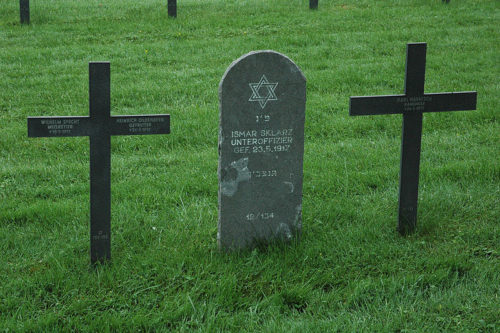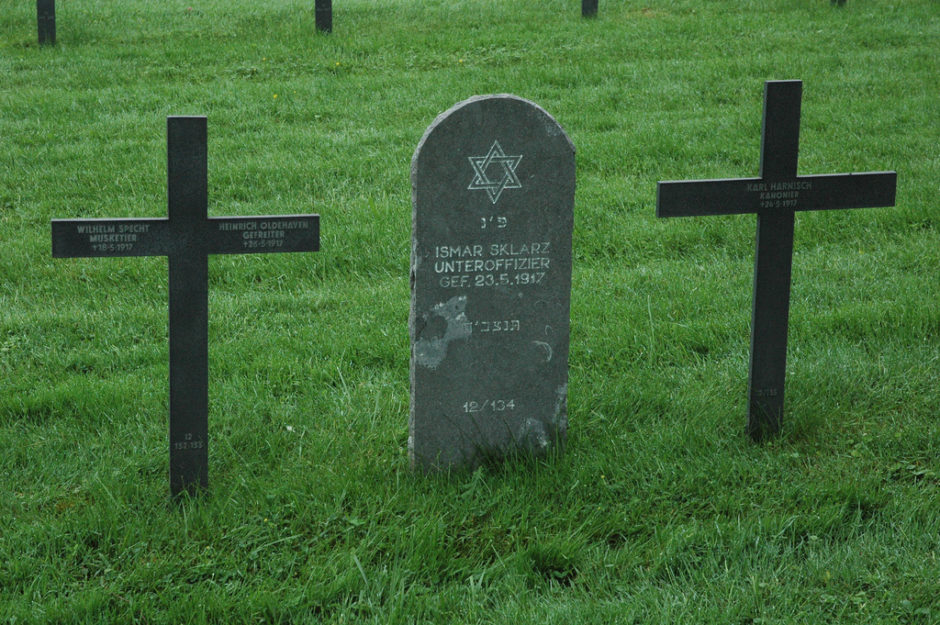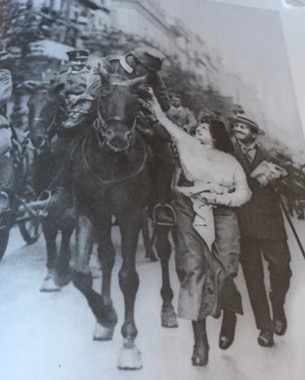
In one of the most iconic photographs of World War I, printed by the mass-circulation Berliner Illustrierte Zeitung in August 1914, a young German soldier mounted on a horse reaches down to two civilians to bid farewell as his cavalry battalion makes its way to the front from Berlin’s elegant Unter den Linden thoroughfare.
Unbeknownst to readers of the popular magazine, all three of the figures in the photograph were Jewish. The soldier, a Berlin student, was Willy Liemann. The people on the street below him were a married couple, Fritz and Emma Schlesinger.
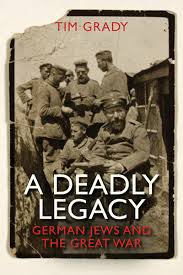
As Tim Grady suggests in his outstanding book, A Deadly Legacy: German Jews and the Great War (Yale University Press), the vast majority of Jews in Germany threw themselves wholeheartedly behind the war effort. During the four-year conflict, which claimed the lives of almost two million German soldiers, including 12,000 Jews, nearly 100,000 Jewish men served in the armed forces as soldiers, airmen, sailors and administrators.
“They fought alongside other Germans in battle, died with them in the same muddy fields or drowned together in the same freezing cold seas,” writes Grady, a British scholar at the University of Chester.
In keeping with a rousing speech delivered by the German kaiser in 1914 about the need for Germans to submerge their differences and relate to each other like “brothers” in the spirit of a “civic truce,” Jews rallied to the colors followingthe outbreak of war. “What most appealed to German Jews was the promise of national unity, of a country free of divisions, where Jews and other Germans could live as equals in the same nation,” he says.
With the unification of Germany in 1871, Jews were emancipated, having been granted equality and religious freedom. Yet antisemitism persisted, prompting thousands of assimilated Jews to convert to Christianity. From 1880 to 1919, 16,479 Jews formally embraced the Protestant faith.
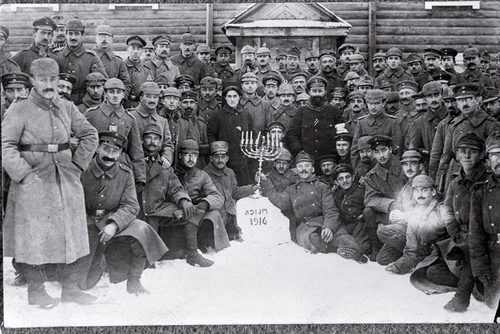
But for Jews who recoiled at conversion, discrimination was a constant factor, particularly in the military. On the eve of World War I, a conservative journal published an article by a retired German general arguing that Jews should not be allowed to become officers. He was peaching to the converted, the standard view in army circles being that it would be inappropriate for Jews to command Christians.
The deep-seated aversion to giving Jews commissions affected all classes. In 1904, Albert von Goldschmidt-Rothschild, the scion of a wealthy Frankfurt banking family, sought a position as a reserve officer, but was rejected despite the intervention of German Chancellor Bernhard von Bulow. “Not even wealth and influence could buy a German Jew entry into the officer corps,” observes Grady.

With the proclamation of the kaiser’s “civic truce,” German Jews hoped that discriminatory practices would peter out. Proceeding from this assumption, they supported the war unhesitatingly. “For most Jews, there was never any question as to whether or not they would stand behind Germany: it was simply a given,” he says.
The patriotic fervor in the Jewish community was such that Ludwig Frank, a Social Democratic politician, enlisted when hostilities erupted. On September 3, 1914, he was killed, the first parliamentarian in Germany to die for his country.
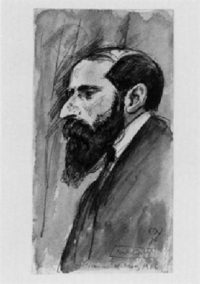
Patriotism could often bleed into chauvinism. The Jewish artist Max Lieberman produced vengeful lithographs of the war, while the Jewish poet Ernst Lissauer wrote the Hymn of Hate, which espoused hatred toward Britain. The Jewish philosopher Martin Buber was especially belligerent in his defence of Germany’s actions, and in some Jewish circles, German militarism was regarded as a positive value.
As Grady points out, Jews endorsed Germany’s policy of fighting an expansionist rather than a defensive war. Among those who opposed talk of annexation and imperial expansion in Eastern Europe were the Social Democrats Eduard Bernstein, Hugo Hasse and Karl Kautsky.
Given the persecution they had suffered under Russian czarist rule, Eastern European Jews welcomed the arrival of the Germany army. In general, though, they left a negative impression on German troops, who were struck by the prevalence of impoverishment in Jewish communities and alienated by the persistence of Jewish hawkers. And because the sex trade in cities like Lodz seemed dominated by Jews, sexual promiscuity and venereal disease came to be associated with Jewish prostitutes.
As a result, German writers urged the government to close the borders to Jewish immigration from Eastern Europe. German Jews, being determined to protect their hard-won position in society, generally viewed Eastern European Jews as undesirable, lacking Western European cultural norms.
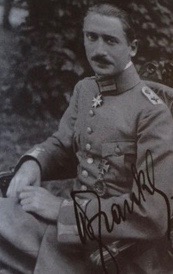
Discriminatory barriers fell, at least to some degree, as the war raged. With attrition rates high and rising, a select number of Jews were accepted into the officer corps. Grady cites two examples. Hugo Gutmann, a regimental adjutant, recommended Adolf Hitler for the Iron Cross 1st class. Wilhelm Frankl, a convert to Christianity and one of the most successful pilots in the air force, was awarded the very rare Pour le Merite medal. “German Jews’ combat experience made a mockery of the antisemitism that Frankl and other fighters faced,” says Grady.
On the home front, Walther Rathenau, a major industrialist, was appointed to head up a new organization charged with regulating the distribution of raw materials to industries. Fritz Haber — a chemist and a future Nobel Prize laureate — was instrumental in Germany’s decision to deploy chlorine gas.
Despite the contribution of Jews to the war, notorious antisemites like Theodor Fritsch — the author of The Handbook of the Jewish Question — sharply questioned their loyalty to the fatherland, while Russian Jewish pedlars in Berlin became the target of vitriolic attacks.

The most dangerous development was the upsurge of antisemitism in the armed forces. “Within the closed circles of privilege and tradition that made up the Prussian officer corps, grumbles could be heard about Jewish influence in the press and around the kaiser,” writes Grady. “German Jews were viewed as having made large profits from the war, while the whole time ensuring that they stayed away from the battlefield.”
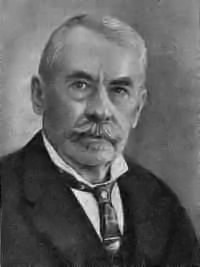
In June 1916, on the heels of a demand by the antisemitic agitator Ferdinand Werner for precise statistics about the military contribution of Jews, the German War Ministry issued internal instructions for a census of Jews serving in the armed forces. Grady believes the order stemmed from a belief that Jews were shirking their duties. The results were never released, but the census had a depressing effect on Jewish servicemen and outraged the Jewish community.
The Prussian war minister, Hermann von Stein, subsequently issued an apology, insisting that Jews had not been subjected to a campaign of prejudice. But in the final analysis, the census “represented an attack by one group of Germans against another,” he asserts.
Antisemitic feeling was also unleashed by the involvement of Jewish socialists in labor strikes. And after Germany’s defeat, still more antisemitism surfaced due to the participation of Jewish leftists like Rosa Luxemburg, Karl Liebknecht and Kurt Eisner in revolutionary uprisings in southern Germany. The extreme right seized on these upheavals to demean Jews.

Plenty of Jews, however, joined the ranks of the far-right Freikorps, which murdered Luxemburg, and of the reactionary Thule Society, an incubator of Nazis, Grady claims.
With the eruption of pogroms in Poland and Ukraine toward the end of the war, tens of thousands of Polish and Ukrainian Jews streamed into Germany, settling mainly in Berlin’s Scheunenviertel district. Antisemites claimed that the newcomers had brought infectious diseases with them and posed a clear and present sexual danger to German women. Right-wing German Jews, like Max Naumann of the Association of National German Jews, disassociated themselves from these Jews and dismissed them as “foreigners.”
The defining image of the infamous “stab in the back” myth, which galvanized the Nazi movement, first appeared on the cover of a magazine edited by Paul Nikolaus Cossmann, a Jew who converted to Christianity in his mid-30s. At the heart of this myth was the belief that the German army had the capacity to fight on and did not have to surrender, and that Marxist subversives and traitorous Jews had caused the home front to collapse.
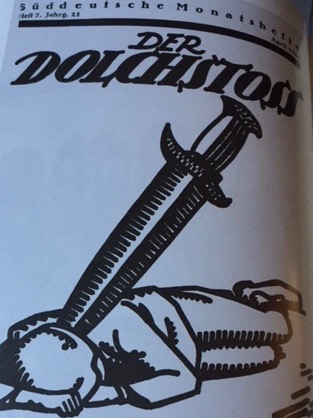
In conclusion, Grady argues that the bitter outcome of World War I “not only provided the foundation for the emergence of the National Socialist movement, but also shaped the fortunes of the postwar Weimar Republic.” As he puts it, “The Weimar Republic lived and died almost entirely in the shadow of the recent conflict.”
Ultimately, the poisonous atmosphere affected the Jewish community in Germany, with Zionists claiming the war had been a disaster for Jews. “Accusations of Jewish profiteering and shirking, as seen through the military’s destructive census, persisted throughout the life of the republic,” he says.
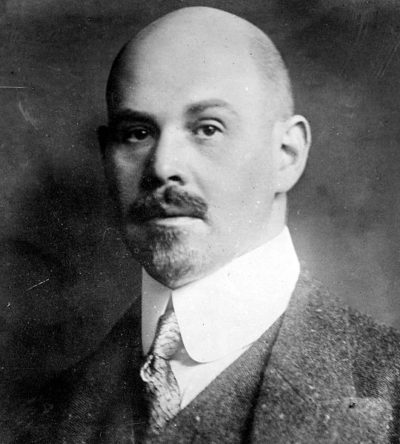
In 1922, extreme rightists assassinated Germany’s first foreign minister, Walther Rathenau. “Clearly, his patriotic work to create Germany’s wartime economy failed to protect him,” he notes dryly.
At first, antisemitic edicts passed by the Nazi regime exempted Jewish war veterans and their families. But with the promulgation of the 1935 Nuremberg Laws, which stripped Jews of German citizenship and forbade mixed marriages between Jews and Christians, these exemptions disappeared.
From that point onward, Grady says, Jewish war vets, in common with all other German Jews, “faced a spiralling tumult of anti-Jewish legislation and violence.”
So much for the sacrifice of 12,000 German Jewish soldiers on the bloody battlefields of Europe.
